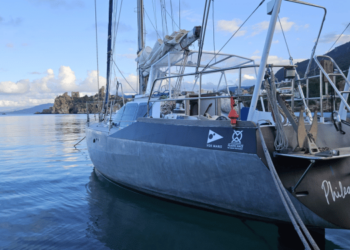Sea lettuce opens a new frontier of sustainable food production – Seaweed, often undervalued, is emerging as a crucial resource to address global food sustainability challenges. Among them, Ulva, commonly called sea lettuce, is standing out for its high nutritional value and its potential to transform food systems. A recent innovative project, ULVA FARM, has developed a cutting-edge cultivation protocol that promises to revolutionise the production of this valuable seaweed.
The ULVA FARM project, funded by the European Maritime and Fisheries Fund, has introduced an innovative method for growing sea lettuce, overcoming the technical limitations of traditional methods. This approach has paved the way for large-scale production of Ulva, ensuring high quality at low costs.
Nordic SeaFarm, a spin-off from the collaboration between three prestigious Swedish universities, is the leader of the ULVA FARM project. With over half a century of experience in marine ecology and seaweed cultivation, this organisation is transforming Ulva production into an efficient and sustainable offshore reality. This progress reduces dependence on cheap, low-quality imports from the Asian market, promoting self-sufficiency and sustainability.
Traditionally, Ulva cultivation has taken place on land, limiting expansion and increasing costs. This has led many producers and consumers to rely on cheap but inferior imports. For example, Sweden imports 75 per cent of its marine raw materials, including fish, shellfish and seaweed. The ULVA FARM project aims to change this paradigm through an offshore cultivation model, allowing for sustainable, high quality local production.
On the west coast of Sweden, the project has already produced promising results, with the production of 530 reels of Ulva at the initial stage, resulting in 23 km of sown thread. This resulted in a yield of 1 kg of Ulva per metre of rope during the optimal sowing season. In addition, 122 hectares of areas suitable for the industrial cultivation of Ulva were mapped, selected according to strict criteria such as depth and wave exposure.
In November 2022, the European Commission adopted the Communication ‘Towards a strong and sustainable algae sector in the EU’, outlining 23 actions to support the algae industry. This initiative aims to transform the sector into a robust and regenerative pillar of the European economy by meeting the growing demand for algae-based products. Demand is expected to reach EUR 9 billion by 2030, with applications in food, cosmetics, pharmaceuticals and energy production.
Sea lettuce opens a new frontier in sustainable food production









